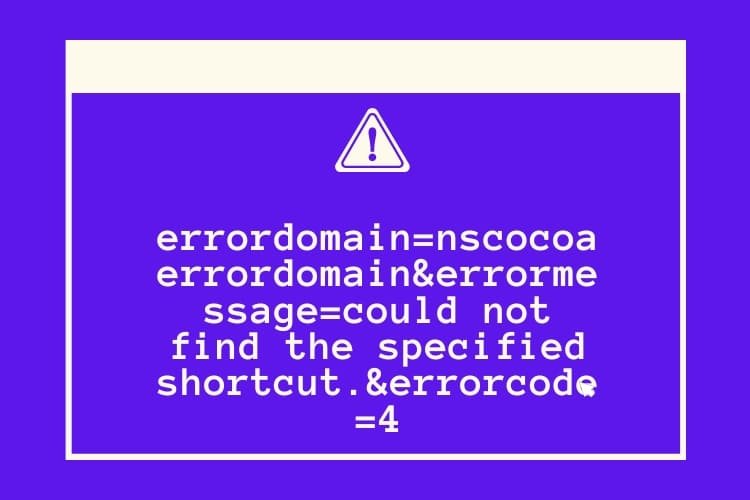Tech
Swift: Correctly Handle File URLs & Avoid Saving Errors

Solving Issue
“errordomain=nscocoaerrordomain&errormessage=could not find the specified shortcut.&errorcode=4″
The issue you encountered is a common one when working with file URLs in Swift. In this particular case, the error message “The file couldn’t be saved because the specified URL type isn’t supported” indicates that the URL being used to save the file is not a valid file URL. The cause of this issue is using the incorrect URL initializer, which is not suitable for local file paths. In this response, we’ll discuss the correct way to handle file URLs and how to avoid similar issues in the future.
In your original code, you used URL(string: path!) to create a URL from a file path string. This initializer is designed for web URLs, which typically have a scheme like “http” or “https”. When working with file URLs, the appropriate initializer to use is URL(fileURLWithPath: path!). This initializer is specifically designed to handle local file paths and creates a valid file URL.
Another important aspect to consider when working with file paths is the search path domain. In your original code, you used .allDomainsMask in the NSSearchPathForDirectoriesInDomains function, which searches for the specified directory type in all available domains. However, when working with local files, it’s more appropriate to use the .userDomainMask option, which restricts the search to the user’s home directory. This is especially important when working with iOS apps, where each app has its own sandboxed directory structure.
In addition to the changes mentioned above, it’s important to ensure that the file path is correctly formed. In your original code, you used dirs?[0].appending("rezepte.csv"), which might not result in a valid file path if the directory path does not end with a forward slash (/). To avoid this issue, you can add a forward slash before the file name when appending it to the directory path: dirs?[0].appending("/rezepte.csv"). This ensures that the file path is properly formed.
With these changes, your updated code should work as expected:
var tempString = String()
for Rezept in alleRezepte {
tempString += "\(Rezept.name), \(Rezept.description), \(Rezept.nutrients), \(Rezept.whatToDo)\n"
}
let dirs = (NSSearchPathForDirectoriesInDomains(.documentDirectory, .userDomainMask, true) as? [String])
let path = dirs?[0].appending("/rezepte.csv")
let url = URL(fileURLWithPath: path!)
do {
try tempString.write(to: url, atomically: true, encoding: String.Encoding.utf8)
} catch {
print(error)
}
print("Daten gesichert")
In summary, when working with file URLs in Swift, it’s crucial to use the correct URL initializer and search path domain. Ensure you’re using URL(fileURLWithPath: path!) local file paths and .userDomainMask when searching for directories. Additionally, pay attention to the proper formation of file paths, including the use of forward slashes when necessary. By following these guidelines, you can avoid issues related to file URLs and create more robust code for handling file operations in your app.
Check out: What is the Best Way to Fix the Windows Error Code 0x0 0x0?
-

 Celebrity4 weeks ago
Celebrity4 weeks agoIs YNW Melly Out Of Jail? What Is The YNW Melly Release Date, Career, Early Life, And More
-

 Sports4 weeks ago
Sports4 weeks agoMore Than Just a Game: How College Sports Can Shape Your Future
-

 Tech3 weeks ago
Tech3 weeks agoAI Software: Transforming the Future of Technology
-

 Tech3 weeks ago
Tech3 weeks agoAll About Com. Dti. Folder Launcher: Features, Benefits, Tips, And More













